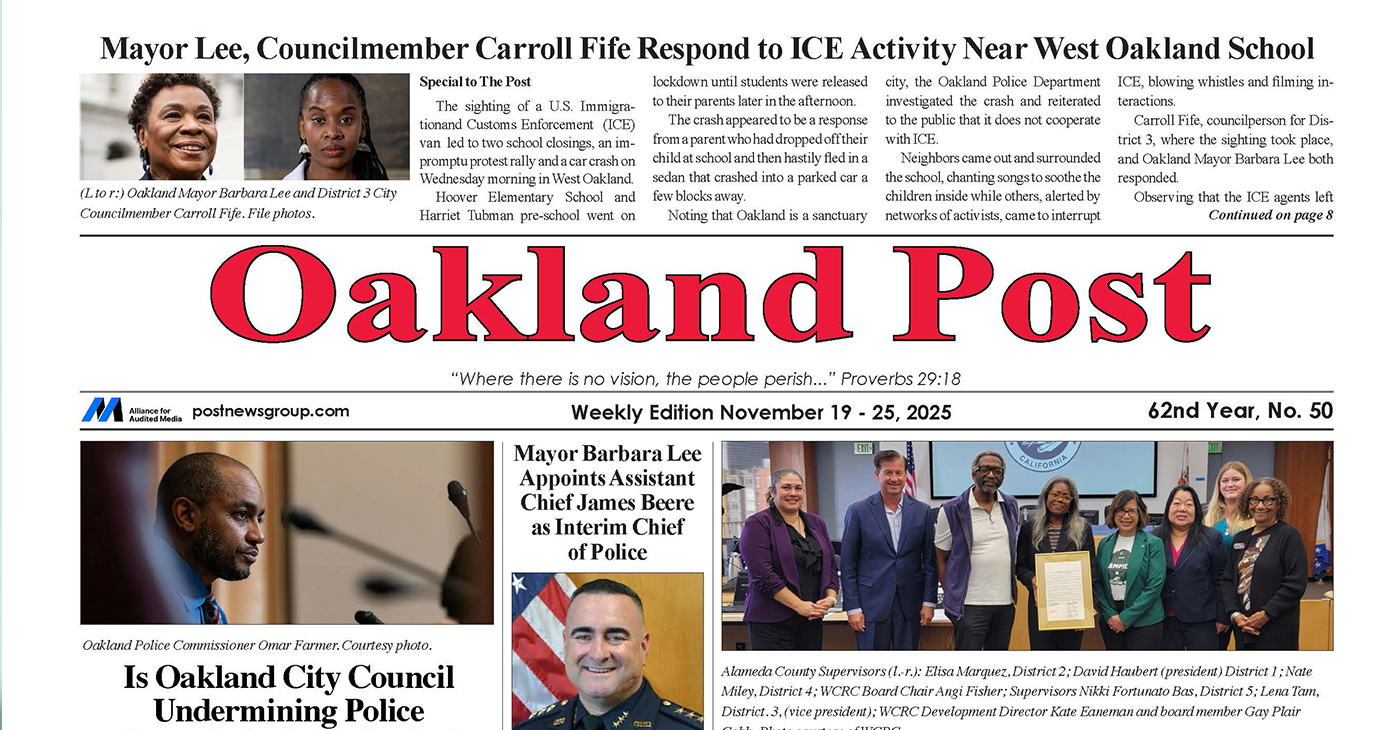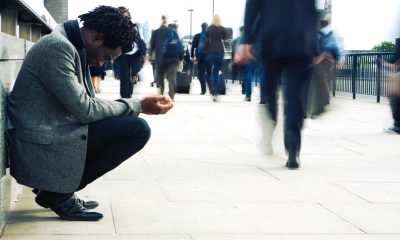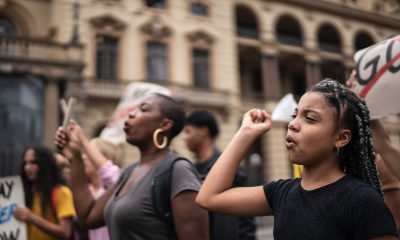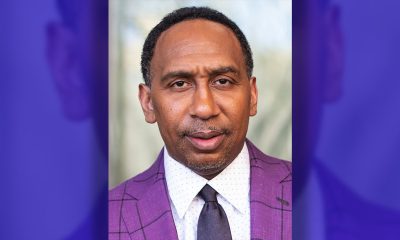Business
Black-owned businesses get a boost at Chameleon Shoppes
MINNESOTA SPOKESMAN-RECORDER — The businesses are part of West Broadway Business & Area Coalition’s (WBBAC) Shop Northside partnership with Chameleon Consortium pop-up retail initiative. The Chameleon Consortium also partnered with Neka Creative and Impact Hub MSP to activate the shops, which take over the first and second floors at Gaviidae.
By Stephenetta (isis) Harmon
The NCAA frenzy may have left town, but shoppers can still take delight in the more than 20 small Black-owned businesses selling their goods and services at Gaviidae Common in downtown Minneapolis.
The businesses are part of West Broadway Business & Area Coalition’s (WBBAC) Shop Northside partnership with Chameleon Consortium pop-up retail initiative. The Chameleon Consortium also partnered with Neka Creative and Impact Hub MSP to activate the shops, which take over the first and second floors at Gaviidae.
The Chameleon Shoppes are chock full of everything from African clothing and accessories and jewelry to beard oils, body butter, and art. They not only help bring to life vacant retail space in what should be a prime downtown location but also create affordable opportunities for minority- and women-owned businesses to expand their reach and marketing efforts.
As a vendor, myself, they also offer an affordable opportunity to expand outreach efforts. Felicia Perry, WBBAC Business Resources Coordinator, said that was a primary goal in partnering.
“The opportunity for our clients to test out their products and services with a different market than they typically have in their own neighborhoods is huge,” said Perry. “We also get to show off how we show up in pop-ups to a different community — especially given the unique marketing strategies required to pull people into a place that we know was already struggling.”
Shop Northside has two retail shoppes on the ground floor, along with a salon and barber experience featuring such services as threading, mini makeup makeovers, a braid bar, microblading and haircuts.
Participating vendors include Tionna Dionne Fashion, Black Excellence, Bowtie Billionaire, Nature’s Syrup, TiAngy Designs, Bimpe Bata Footwear, Just Hair USA, We Wanna Rock, Body Love, Allure Cigars, Cald2Art and Christyle Closet.
The shops will remain open through the end of April. After that, Perry said WBBAC will continue its longstanding efforts to create small business opportunities for its clients.
“We’ve been doing this economic development work in different ways for a while now and we intend to continue to find creative ways to plug our business owners, artists and makers into economic opportunities as we discover them ourselves,” said Perry. This includes their monthly “Northside Business Lunch” — this month’s April 18 session is focused on “Retail Hustle” and tips for being a successful retail entrepreneur.
“It’s a great experience to be downtown,” said Crystal Lemar, owner of Christyle. “It’s exciting because I’ve always wanted to open up or have a boutique in downtown Minneapolis. So this is my opportunity to live out my dream for the month of April.”
Perry added that supporting and creating opportunities for these businesses to thrive also keeps money within the community.
“This is where they stay and this where they spend their money,” she said. “That’s real actual economic and social development because we’re not just getting to know a new business, but we’re getting to know our neighbors, as well.”
The Chameleon Shoppes are located in Gaviidae Common, located 651 Nicollet Avenue in downtown Minneapolis, and are open Wednesday-Friday, 10 am – 2 pm now through April 26.
For more information on Shop Northside, visit northmpls.org. For more info on Chamelone Shoppes, visit chameleonconsortium.com.
This article originally appeared in the Minnesota Spokesman-Recorder.
Alameda County
Seth Curry Makes Impressive Debut with the Golden State Warriors
Seth looked comfortable in his new uniform, seamlessly fitting into the Warriors’ offensive and defensive system. He finished the night with an impressive 14 points, becoming one of the team’s top scorers for the game. Seth’s points came in a variety of ways – floaters, spot-up three-pointers, mid-range jumpers, and a handful of aggressive drives that kept the Oklahoma City Thunder defense on its heels.

By Y’Anad Burrell
Tuesday night was anything but ordinary for fans in San Francisco as Seth Curry made his highly anticipated debut as a new member of the Golden State Warriors. Seth didn’t disappoint, delivering a performance that not only showcased his scoring ability but also demonstrated his added value to the team.
At 35, the 12-year NBA veteran on Monday signed a contract to play with the Warriors for the rest of the season.
Seth looked comfortable in his new uniform, seamlessly fitting into the Warriors’ offensive and defensive system. He finished the night with an impressive 14 points, becoming one of the team’s top scorers for the game. Seth’s points came in a variety of ways – floaters, spot-up three-pointers, mid-range jumpers, and a handful of aggressive drives that kept the Oklahoma City Thunder defense on its heels.
One of the most memorable moments of the evening came before Seth even scored his first points. As he checked into the game, the Chase Center erupted into applause, with fans rising to their feet to give the newest Warrior a standing ovation.
The crowd’s reaction was a testament not only to Seth’s reputation as a sharpshooter but also to the excitement he brings to the Warriors. It was clear that fans quickly embraced Seth as one of their own, eager to see what he could bring to the team’s championship aspirations.
Warriors’ superstar Steph Curry – Seth’s brother – did not play due to an injury. One could only imagine what it would be like if the Curry brothers were on the court together. Magic in the making.
Seth’s debut proved to be a turning point for the Warriors. Not only did he contribute on the scoreboard, but he also brought a sense of confidence and composure to the floor.
While their loss last night, OKC 124 – GSW 112, Seth’s impact was a game-changer and there’s more yet to come. Beyond statistics, it was clear that Seth’s presence elevated the team’s performance, giving the Warriors a new force as they look to make a deep playoff run.
Activism
Oakland Post: Week of November 26 – December 2, 2025
The printed Weekly Edition of the Oakland Post: Week of November 26 – December 2, 2025

To enlarge your view of this issue, use the slider, magnifying glass icon or full page icon in the lower right corner of the browser window.
Activism
Oakland Post: Week of November 19 – 25, 2025
The printed Weekly Edition of the Oakland Post: Week of November 19 – 25, 2025

To enlarge your view of this issue, use the slider, magnifying glass icon or full page icon in the lower right corner of the browser window.
-

 Activism3 weeks ago
Activism3 weeks agoOakland Post: Week of November 12 – 18, 2025
-

 Activism3 weeks ago
Activism3 weeks agoIN MEMORIAM: William ‘Bill’ Patterson, 94
-

 Activism3 weeks ago
Activism3 weeks agoHow Charles R. Drew University Navigated More Than $20 Million in Fed Cuts – Still Prioritizing Students and Community Health
-

 Bay Area3 weeks ago
Bay Area3 weeks agoNo Justice in the Justice System
-

 #NNPA BlackPress3 weeks ago
#NNPA BlackPress3 weeks agoLewis Hamilton set to start LAST in Saturday Night’s Las Vegas Grand Prix
-

 #NNPA BlackPress2 weeks ago
#NNPA BlackPress2 weeks agoBeyoncé and Jay-Z make rare public appearance with Lewis Hamilton at Las Vegas Grand Prix
-

 Activism2 weeks ago
Activism2 weeks agoOakland Post: Week of November 19 – 25, 2025
-

 #NNPA BlackPress3 weeks ago
#NNPA BlackPress3 weeks agoThe Perfumed Hand of Hypocrisy: Trump Hosted Former Terror Suspect While America Condemns a Muslim Mayor

























































